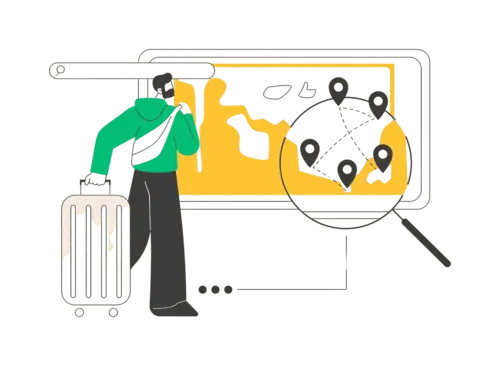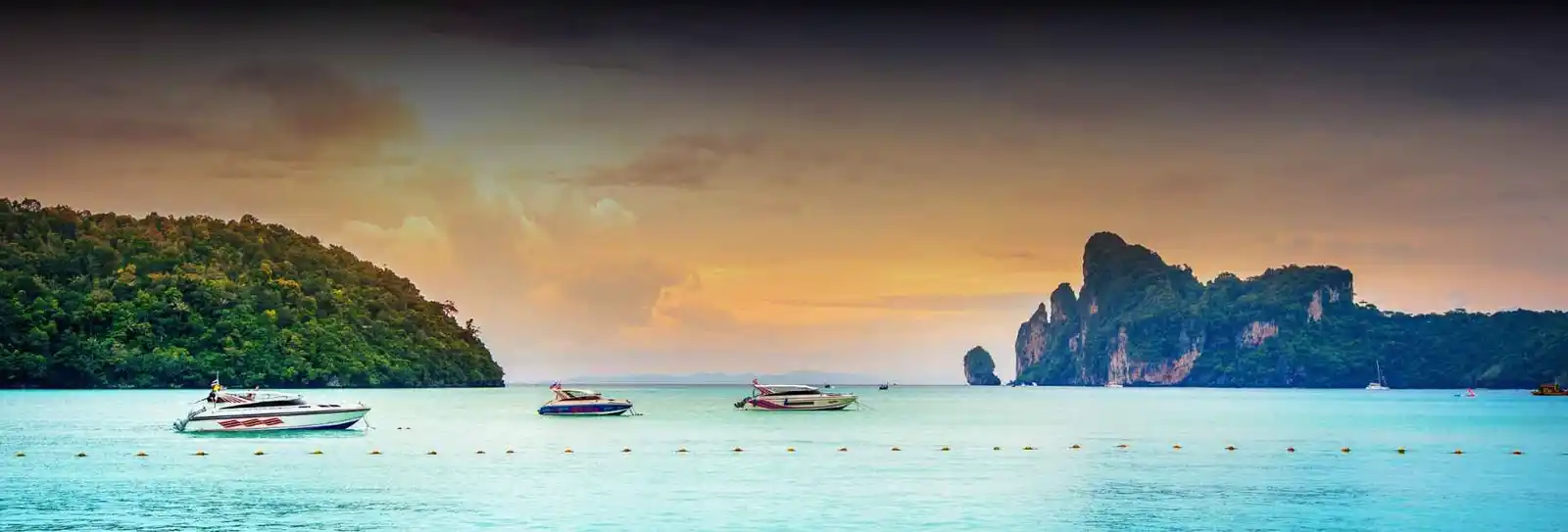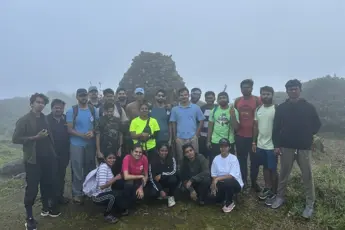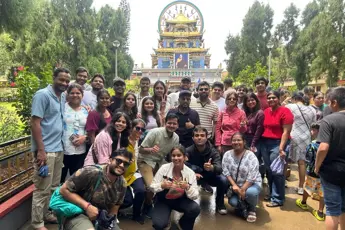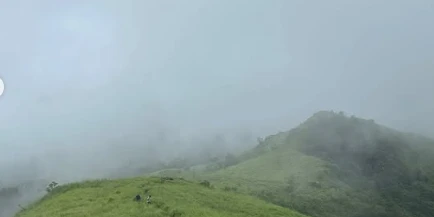
Kumara Parvatha is the most coveted trekking place in South India and the prettiest summit in the Western Ghats. Towering to a height of 1,712 meters (5,617 feet), it is the highest in the Pushpagiri Wildlife Sanctuary and the second highest in the state following Mullayanagiri. Situated in the Kodagu district close to the temple town of Kukke Subramanya, KP is a draw for adventure seekers and nature enthusiasts from all over the country because of its tough terrain, scenic landscape, and high biodiversity."The Ultimate Challenge" of Western GhatsKP is referred to as the "Ultimate Challenge" of the Western Ghats because it is a tough and demanding trek. As compared to any other South Indian trek, where relatively easy routes are available, Kumara Parvatha requires top physical fitness, hard work, and willpower. The trek is approximately 22-28 km (return) and therefore one of the longest and most challenging Karnataka treks. The trek comprises steep climbs, dense forests, open grasslands, and rock trails, which challenge physical as well as mental endurance of mountaineers. The trek is two-fold: the first segment from Kukke Subramanya to Bhattara Mane, a traveler rest house, and the second segment from Bhattara Mane to the summit. The first segment involves the trekkers walking through dense forests with hardly any flora and fauna. This segment is typically wet and tiring, as the dense cover impedes air movement.Once they arrive at Bhattara Mane, a halt with accommodation and food facilities, the actual test begins. The second stage consists of open grasslands and steep inclines, which expose the trekkers to the vagaries of the weather. The third stage is a grueling walk over boulder-strewn country, which is challenging even for seasoned trekkers. Aside from the physical ordeal, KP is also famous for its uncertain climate. Treks there mean abrupt rains, foggy trails, and shifts in temperature very rapidly, and these are some key factors for adventure and adversity during the climb. With such a nature as rugged as it possibly could be, it is more suited for expert trekkers or someone who already has high-altitude trekking experience under his belt.Best Season to Visit for TrekkingThe best time to go for a trek to KP is from October to February, whereas the post-monsoon and winter seasons. The climate is good, the sky is blue, and the trekking is manageable to maintain during this season, so it is a delightful and safer experience. Let us discuss the effect of seasons on trekking conditions:Post-Monsoon (Oct-Nov): Once the monsoon has passed, the KP grasslands and forest are green to the brim, with some excellent scenery and a glorious climate. The streams and waterfalls on the trail are in their best form too, making the landscape better. The trails remain pretty sloppy and slippery with leftover wetness. Good quality trekking footwear with good grip must be put on by the trekkers to tackle this.Winter (Dec to Feb): The ideal time for trekking, winter is a season with pleasant, dry, and cold weather conditions ideal for trekking. Day temperatures ranging from 10 to 25 degrees Celsius and cold nights, with temperature fall at a higher altitude, make it the ideal season to trek. The remote possibility of rains diminishes the possibility of slippery roads, and there is a breathtaking view of the Western Ghats below its clear blue canvas. It is also the optimum time for wildlife sightings because Pushpagiri Wildlife Sanctuary has a mix of creatures such as langurs, Malabar giant squirrels, and birds.Summer (March to May): Summer is not a good time for trecking because the temperature is extremely high and the humidity is extremely high. Climbing under the heat becomes tiring and can cause dehydration and fatigue. The dry climate also puts the body at risk of extreme sunburn and heatstroke. If the hike is being done during this season, they have to bring water with them, dress in light-colored clothing, and attempt to go early in the morning so they will not have to endure the blistering heat.Monsoon (June to September): Monsoon is the season of heavy rain, and the trails are very slippery, leechy, and risky. The dense fog reduces visibility, and strong currents in the streams make river crossings risky. Trekking permits also seem to be in short supply at this time for safety purposes. Monsoon trekkers see the jungle as a mythical paradise of misty trees, roaring waterfalls, and deep silence, however.Trekking Route and Difficulty Level: Kumara Parvatha TrekKumara Parvatha trek, one of South India's most challenging yet rewarding treks, is a once-in-a-lifetime experience for trekking lovers. Located in the Western Ghats, the trek exposes you to dense forests, big meadows, and rock faces before eventually ascending to the top of KP (1,712 meters). Two popular treks to the top are one from Kukke Subramanya and another from Somwarpet. Both have their own terrain, diverse geography, and distinct trekking experiences. The following guide gives information on trekking routes, difficulty level, popular landmarks, and physical ability to perform this blood-pumping activity.Start Points: Kukke Subramanya Route vs. Somwarpet RoutesKukke Subramanya RouteThe most used and visited route begins from the Kukke Subramanya Temple in the Dakshina Kannada region of the Karnataka state. It is 13-14 km one way, and it is more inclined in nature because it has climbs and uneven levels. The trekking starts from the temple, to a forest dense for around 6 km before one arrives at Bhattara Mane. The trek after this is challenging and steep, with boulders and grasslands in the open exposing the trekkers to sunshine. The latter half of the trek from Shesha Parvatha to KP peak is the most challenging in terms of asking for brilliant endurance.Somwarpet RouteThe Somwarpet trail begins at Beedahalli of Coorg and extends approximately 7 km to the peak. The trail is gentler and not as steep as the Kukke trail. Trekkers trek along the Pushpagiri Wildlife Sanctuary, which has plenty of biodiversity, scenic landscapes, and an easier climb. The trek is less touristy than the Kukke trek and provides a secluded and serene trekking experience. This trek does not go via Bhattara Mane, and therefore trekkers have to carry water and food for themselves.👉 Looking for a thrilling Monsoon trek near Bangalore? Don’t miss the chance to experience the Kumara Parvatha Trek with Escape2Explore. This guided adventure offers scenic trails, an ancient fort, and breathtaking sunrise views — perfect for weekend getaways and nature lovers.Distance and Elevation GainThe distance of the trek varies with the route taken:Kukke Subramanya to KP Summit: 13-14 km single waySomwarpet to KPSummit: 7 km single wayFor the entire crossing of the mountain, both ways, the trek distance would be approximately 21 km.The trek is an elevation gain of approximately 1,600 meters, which is a high-endurance trek. The steep slopes and rough terrain are the reasons behind the difficulty level in the trek. Key Landmarks Along the WayBhattara Mane: It is one of the most sought-after halts on the Kukke Subramanya trail, where one takes rest and has meals. It is run by a local family and offers simple food and plain facilities to the trekkers. Stop here and proceed in most cases.Kallu Mantapa: A tiny rock formation about 2 km short of Bhattara Mane, Kallu Mantapa is a relief point. It is a landmark and serves as a source of shade before the last and steep climb starts.Shesha Parvatha: Misnamed as the top of KP, Shesha Parvatha is a big rock pile that juts out on the path of Kallu Mantapa. The trail here is very steep and rocky with boulders and little greenery. The scenery from here, though, is well worth the effort.Kumara Parvatha Peak: The last milestone, KP Peak, rises 1,712 meters into the sky. The last stretch of trek involves climbing along boulder-tattered trails with rugged slopes. There is nothing but beautiful landscape views of the nearby Western Ghats and underneath the valleys to see at the summit.Total Duration and Needed FitnessTotal DurationDuration of the hike on the KP trek depends on varying levels of fitness of individuals and route taken.Kukke Subramanya to Summit: 6-8 hours Somwarpet to Summit: 4-5 hours Down to Kukke Subramanya: 4-6 hours Down to Somwarpet: 3-4 hours Complete Traverse (Somwarpet to Kukke Subramanya or return): 10-12 hours2-day trek is the most popular among trekkers, who stay overnight at Bhattara Mane or camp campsite. KP can also be done in one day, but it's very tiring and not suitable for beginners.Physical Fitness RequiredKP is tough to moderate and requires high physical fitness. Trekkers need to be ready for:Rocky slope and steep climb: The climb, particularly after Bhattara Mane and close to Shesha Parvatha, is challenging and physically strenuous.Physical endurance needed: Because the trek is being done in one day (or two), trekkers have to be pretty good with endurance and stamina.Weather: The path is very damp and the trek ends up becoming tire-some. The path is slippery and teeming with leeches when it's in monsoon time.Limited supplies: There are no food or water points along the trail except at Bhattara Mane. The trekkers have to bring enough water and snacks.For training for this trek, it is recommended that one undergoes a workout session of cardiovascular training, leg exercise, and endurance training. Running, cycling of bicycle, and climbing stairs are all are some of the activity types that can prove to be useful. Freshers can try simple treks before Kumara Parvatha.Permits and Regulations for Pushpagiri Wildlife SanctuaryKarnataka's Western Ghats Pushpagiri Wildlife Sanctuary is one of the most important ecological hotspots with dense biodiversity of plants and animals. The region is characterized by its beautiful landscape and rich biodiversity and is a strongly sought-after trekking destination. Because of its ecological sensitivity, it has certain permission rules and strict adherence to stipulated rules to maintain its delicate ecosystem.Forest Department Permissions and FeesEntry PermitsTo visit Pushpagiri Wildlife Sanctuary, either to trek, take wildlife photographs, or do research, one has to obtain an entry permit from the Karnataka Forest Department. Permits control the entry of tourists and enable strict adherence to conservation norms.Individual Permits: Regular tourists, trekkers, and nature walkers must obtain entry passes from the forest department counter at the park entrance.Group Permits: Pre-authority is to be obtained by group trekkers, normally by recognized trek operators or district forest department offices.Research and Photography Permits: Documentary photographers and research personnel are required to have special permission from the Karnataka Forest Department.Camping Permits: Overnight camping within the sanctuary complex is under strict regulation. Overnight camping will be permitted only in specially selected areas and prior sanction is to be had.Packing Essentials for TrekkingTrekking is a rewarding and thrilling experience, but you are prepared to have a fun and safe one if you are well-prepared. Plan and you will have the correct packing list, which will go great lengths on your trek. Following are the basics that you need to carry with you, divided into three most essential categories: trekking and clothing, food and water supplies, and survival kit and first-aid kit.Clothing and Trekking GearProtection and comfort need to be addressed by proper clothing and trekking equipment. The key to dressing for following is layering when choosing your trekking clothes. Below are the essentials of clothing and trekking gear:Base LayerThe base layer's job is to wick away sweat from your skin to stay dry and comfortable.Thermal innerwear – Essential for winter treks.Moisture-wicking T-shirts – Synthetics or merino wool preferred.Tights or leggings – Adequate for freezing weather.Middle LayerThe middle layer is worn to retain body heat and provide insulation.Fleece sweater or jacket – Warm yet light.Insulated synthetic or down jacket – Warm yet no weight.Outer LayerThe outer layer is worn for defense against wind, rain, and snow.Windproof and waterproof jacket – Must have when weather is un predictable.Waterproof trousers – Stays dry in heavy rain.Trekking Shirts and TrousersConvertible trekking trousers – Drying quickly, light.Long-sleeved shirts – Protection from sunburn and insects.ShoesTrekking boots – Ankle-supported, waterproofed, and fitted.Gaiters – Mud, snow, and dirt protection.Woollen or synthetic socks – Drying the feet and warm.AccessoriesTrekking poles – Stabilization over uneven terrain.Gloves – Insulating gloves in cold, waterproof gloves in wet.Cap or hat – Sun protection.Sunglasses – Must have UV protection.Scarf or buff – For wind and dust guard.Challenges and Adventure FactorTrekking is perhaps the most thrilling outdoor activity, with a sample of nature's beauty, physical resilience, and mental resilience. However, the adventure element is best served by a sequence of obstacles for the participants in the trekking experience, ranging from steep uphill challenging terrain and rock-surface geography to unpredictable climatic conditions and possible wild animal sightings. These elements introduce an element of excitement and unpredictability into the trekking experience, which must be foreseen and endured. Rocky Terrains and Steep Ascents Perhaps the most physically demanding part of trekking is climbing steep ridges and more challenging terrain. Much of trekking is long climbing that pushes strength and endurance. Trail grade can be varied, and some are rope or ladder climbing, or rock climbing to climb at all safely.Treks to high altitudes, like the Himalayas, have very steep climbs with less oxygen available, so the physical effort is even more difficult. Aside from ascents, trekkers also have to tread on uneven, rocky, and sometimes slippery trails. Trails can be littered with loose rocks, huge boulders, or dense bushes, all of which require careful footwork so that one would not slip or tumble. There are also trails with steep inclines followed by sudden drops, and trekkers need to hold on for balance and control. The rough land challenge is introduced in backcountry terrain where trails are indistinct. Bushwhacking through dense woods or traversing landslides and moraines wore out. Trails occasionally might even involve river crossing, where rough currents and flat riverbeds contribute to the challenge. Two such extreme glaciated or desert environments being part of the trail also regulate physical effort and the use of proper apparatus and skill.How to reach Kumara ParvathaKumara Parvatha, the toughest and most scenic trekking spot of Karnataka, is situated in Dakshina Kannada district at Kukke Subramanya Western Ghats. To begin this adventure trekking, you must reach the starting point of the trek, i.e., Kukke Subramanya. You can reach there by various means based on your source and the vehicle available to you.By AirportThe nearest airport is Mangalore International Airport, which is 150 km away from here. Taxi or bus from the airport to Kukke Subramanya is available. By road, a four-hour journey will reach you. Mangalore Airport is also very convenient with frequent access to the maximum major cities like Bangalore, Chennai, Mumbai, and Delhi. By air would be convenient for the individual who belongs to distant places.By TrainThe nearest railway station is Subrahmanya Road Railway Station (SBHR) and it is only 12 km from Kukke Subramanya. It is situated under the Mangalore-Bangalore route and is well-linked to Karnataka and other state capitals. It can be reached by auto-rickshaw or taxi from the station to the town of Kukke Subramanya. The bus service is also viable directly from station to town.By RoadKukke Subramanya is also well-road-connected and easily accessible from Bangalore, Mangalore, and other small towns. Kukke Subramanya is 280 km from Bangalore and a six- or seven-hour bus journey or drive. You can spot Karnataka State Road Transport Corporation (KSRTC) and private operators with daily regular bus services between Bangalore and Kukke Subramanya. You can take a ride in a sleeper, semi-sleeper, or luxury bus according to your convenience. Bangalore-Hassan-Sakleshpur-Kukke Subramanya is the most convenient and comfortable road for drivers as well as cyclists, and the road is scenic too. The highway is good but with U-turns at some points, and thus the drive is slow.Why Book with escape2exploreWhen exploring the Kumara Parvatha trek from Bengaluru and beyond, escape2explore stands out as a trusted name in adventure and experiential travel. Here’s why hundreds of travellers choose us for their getaways:Trusted, Well-Reviewed Local Operator: escape2explore has gained the trust of thousands of content tourists all over India. With persistent positive feedback and an unblemished reputation for delivering quality experiences, we assure you that your experience will be hassle-free, memorable, and value-packed. Our insider local knowledge guarantees that you will always be in safe hands.Seasoned Guides: Our trips are led by friendly, trained, and professional guides who are passionate about the outdoors and your safety. Whether it's a beach trek, a cultural tour, or a spiritual walk through temples, our team knows the terrain, the stories, and how to make each moment count.Safe & Curated Itineraries: Your safety is our number one priority. Our tour packages are thoughtfully crafted with safety measures, researched accommodations, and easy travel arrangements. We take care of the details so you can have the experience hassle-free and worry-free.Unique Experience That You Won't Find Anywhere Else: With escape2explore, you discover more than the tourist attractions. We go off the beaten track with hidden beaches, unusual treks, offbeat cultural destinations, and true interactions.Read: Places to Visit in Bangalore|Places to Visit near Pune | Places to Visit near Hyderabad | Forts in Delhi |Places to Visit in Kullu Manali
